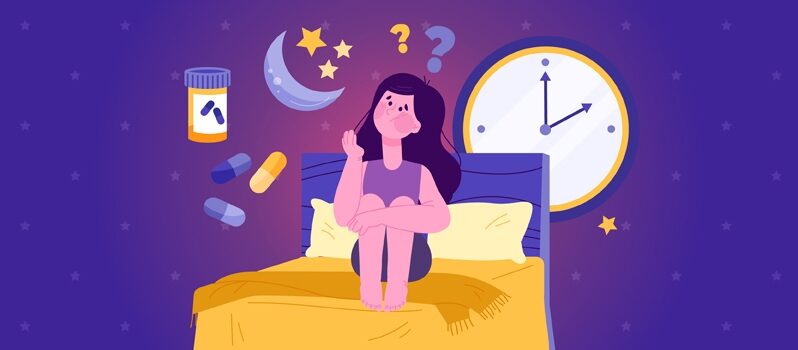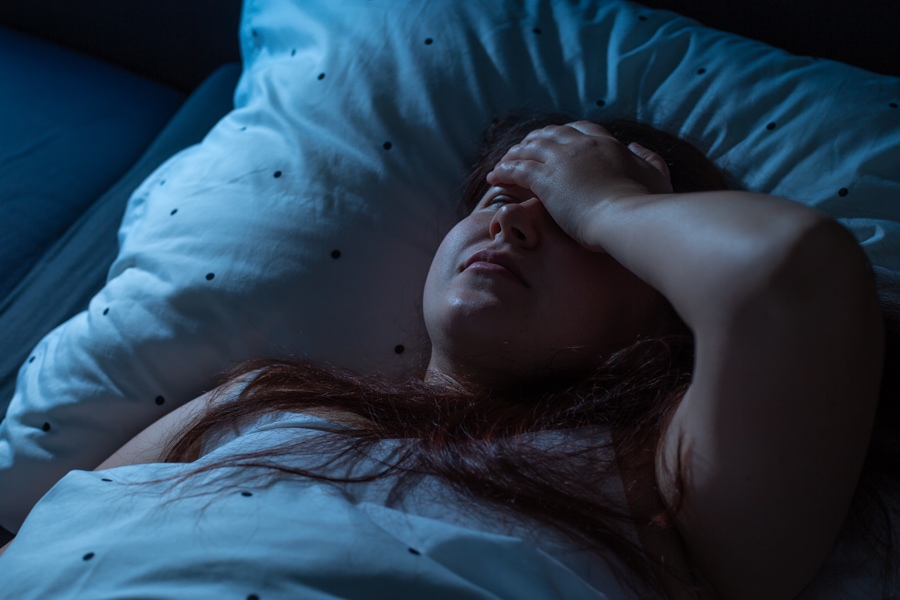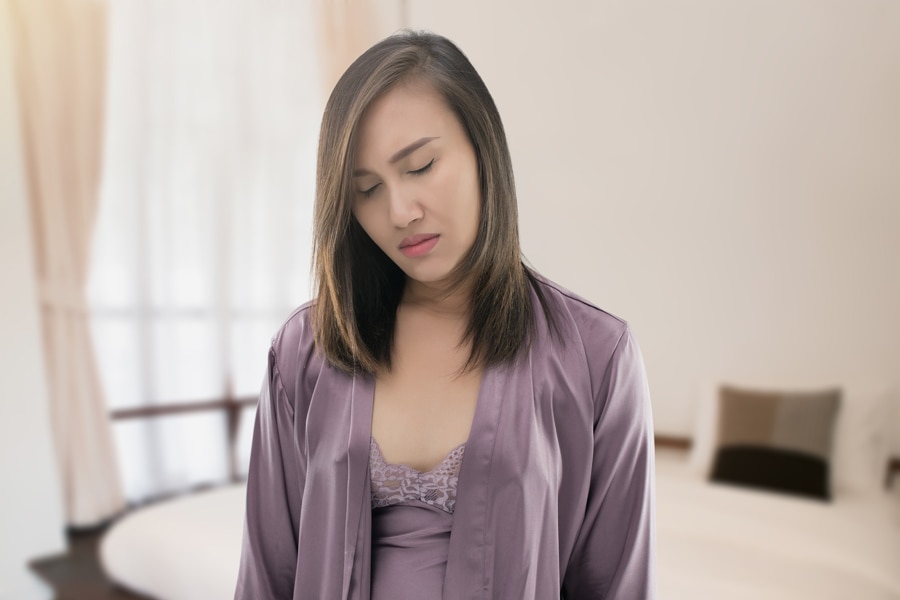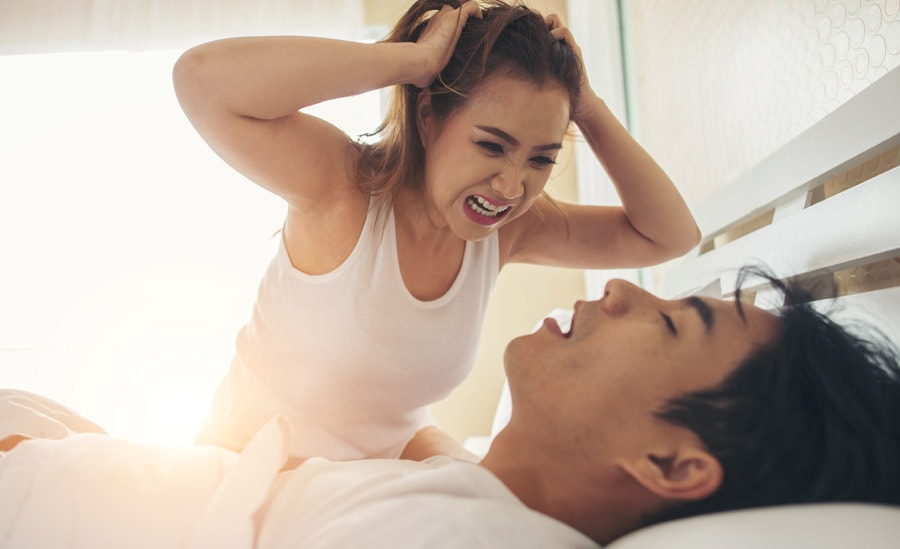Sleep Disorders Statistics And What You Need to Know

Sleep disorders disrupt an individual’s everyday life to a major extent, and healthcare burdens in countries across the globe have been indicating a rapid spike as poor sleep quality and loss of sleep continues to result in a rising number of sleep-related or associated conditions and chronic diseases.
Some of the common conditions associated with sleep-related issues are heartburn, diabetes, cardiovascular disease, musculoskeletal disorders, kidney disease, neurological disorders, respiratory problems, mental health problems, and thyroid disease.
Among the over 90 distinct sleep disorders, the most common types are:
Insomnia manifests as difficulty in falling asleep or staying asleep, and has been noted as a condition that causes a range of other symptoms and chronic diseases in sufferers.

Sleep apnea is a medical condition that causes brief repetitive pauses in breathing during the process of falling asleep or while sleeping, and occurs when the muscles in the back of the throat or the soft fatty tissues relax. Obstructive Sleep Apnea (OSA) is the most common sleep apnea.
Narcolepsy is associated with excessive daytime sleepiness, sleep paralysis, cataplexy, and sleep hallucinations. Narcolepsy sufferers are known to sleep for around 12 to 20 hours, which exceeds the 8 hours recommended number of hours of healthy sleep by far.
Restless Legs Syndrome (RLS) is a sensory disorder, which causes the urge to move the legs, and this typically occurs while the sufferer is sitting up or lying down, and can generally disrupt sleep.
REM Behavior Disorder (RBD) is a parasomnia, in which the subjects act out dreams with physical Prevalence of REM behavior disorder among the general population is 0.5 to 1%.
Circadian Rhythm Sleep Disorders (CRSDs) refer to disruptions in the timing of sleep and wake cycle, and the consequences that result from disruption.
Long sleepers – suffering from a condition known as idiopathic hypersomnia – are among those who require more than the recommended number of sleep hours of 8–9 hours per night. On average, long sleepers are known to clock 10 to 12 hours per night to feel their best.
Sleeping regularly for less than the stipulated 7 hours in a 24-hour period can be termed as short sleep duration or short sleep syndrome (SSS).
Kleine-Levin Syndrome (KLS) – also known as ‘Sleeping Beauty’ syndrome – is a rather rare neurological disorder, which is characterized by recurrent bouts of excessive sleeping (hypersomnolence), and conditions also include cognitive and behavioral issues when the individual is in the state of wakefulness.
The term – parasomnia – refers to general sleep disruptions from the REM sleep cycle and non-REM sleep cycles. Individuals experience episodes of unusual behaviors prior to falling asleep, while asleep, or during the arousal period between sleep and wakefulness.
Sexsomnia refers to unusual behavior of enacting or performing a sexual act during sleep, and most sufferers are often unaware of their unusual behaviors and actions when they awaken.
Sleepwalking is also a parasomnia, and involves abnormal behaviors or movements during sleep. Sleepwalking – formally known as somnambulism – is more common in children than adults.

Night terrors, also referred to as sleep terrors, can cause deep fear while an individual is asleep, and result in disrupting or affecting normal sleep patterns.
Frightening dreams usually occur during REM sleep, and are considered normal or common in children under 10 years of age. Nightmares however also occur in teens and adults. Nightmares are only considered a disorder if found to be causing disturbance and distress and obstructing healthy.
Snoring occurs when the soft tissue in the back of the throat vibrates due to turbulence while inhaling and exhaling during sleep. Though all ‘simple snorers’ may not be suffering from a sleep disorder, many serious snorers may have Obstructive Sleep Apnea (OSA).

Excessive Daytime Sleepiness (EDS) refers to the urge to fall asleep during daytime hours, and is common in both adults and children.
Sleep paralysis (SP) is characterized by the sensation of being unable to move while awakening from sleep. Sleep paralysis can be best described as a transitional state that occurs in the form of temporary inability to move, react, or speak. This generally occurs while asleep, in the process of falling asleep or awakening.
Catathrenia is a parasomnia that is relatively rare and undocumented. It involves the subject making groaning – sometimes loudly – during sleep. This disorder can occur during any stage of sleep, but most often occurs with highest frequency during REM sleep or deep sleep.
Congenital Central Hypoventilation Syndrome (CCHS) is a condition related to the autonomic nervous system, and affects breathing, especially during sleep. It also causes nocturnal groaning.
Exploding Head Syndrome (EHS) is a disorder characterized by the perception of loud noises (e.g. a bomb explosion, gunshot or cymbal crash) when going to sleep or awakening.
Attention Deficit/Hyperactivity Disorder (ADHD) is an increasingly prevalent developmental disorder, and is associated with disrupted sleep and several sleep related disorders and symptoms.
Delayed Sleep Phase Syndrome (DSPS) is a sleep disorder that occurs when a person’s circadian rhythm (sleep/wake cycle) is delayed from the typical day/night cycle. People with delayed sleep phase have a natural tendency to go to bed later and wake up later than what is typically considered normal.
Shift Work Sleep Disorder (SWSD) or shift worker syndrome is a condition that can occur if an individual’s natural sleep cycle is chronically disrupted as a result of working overnight, overtime, or rotating shifts.
Myoclonus causes brief twitching of single or groups of muscles and results in the body jerking while asleep or in the process of falling asleep.
Sleep-Related Eating Disorder (SRED) entails the subject awakening during sleeping hours to eat or drink; sometimes excessively, and almost entirely unconsciously aware of the event later.
Fatal Familial Insomnia (FFI) is a rare genetic degenerative brain disorder that causes inability to sleep, which can lead to significant mental and physical deterioration as it worsens over time.
Alcohol can also induce insomnia, thereby causing symptoms such as mood swings, decreased energy level, low physical and mental health, and deteriorate the overall quality of life.

Insomnia is the most common manifestation of depression, and results in the onset of several other sleep disorders.
Sleep disorders are very common in persons with several psychosis disorders, with insomnia being a predictor of psychosis in ultrahigh risk adolescents.
Sleep is very essential for an individual to remain mentally, physically, and emotionally sound. Sleeping for the recommended 8–9 hours a night or in a 24-hour span ensures better quality of life, health and wellness. Lack, less, or poor quality of sleep increases risks of serious or chronic medical conditions and diseases as well. Inadequate sleep for prolonged periods of time is known to shorten an individual’s lifespan. Healthy sleep routine can be negatively impacted by unhealthy lifestyle, habits and patterns, stress and depression, and also by underlying diseases and medical conditions. Sleep disorders and sleep disruption further aggravate depression and anxiety.
Some actions or approaches can be adopted to by individuals with sleep disorders to alleviate or manage sleep-related challenges and conditions, some of which are:
Developing and maintaining a proper routine and sleep hygiene has been known to aid in treating sleep disorders over a period of time. If suffering from anxiety and depression, physical illnesses and pain, or neurological problems, seek medical help to address and resolve issues, because your sleep is essential to a better, satisfactory, and healthier life.
Disclaimer
*Contents, data, and information presented in this article is solely to provide a general outlook about sleep statistics and sleep facts, which are based on the results of expert studies, research, and surveys conducted by competent bodies, researchers, and organizations in the target field.
3. https://www.ncbi.nlm.nih.gov/pmc/articles/PMC1978319/
4. https://www.nationwidechildrens.org/specialties/sleep-disorder-center/sleep-in-adolescents
5. https://www.sleepassociation.org/about-sleep/sleep-statistics/
6. https://my.clevelandclinic.org/health/diseases/12119-insomnia
7. https://www.sleepfoundation.org/insomnia/types-of-insomnia
8. https://www.sleepfoundation.org/insomnia
9. https://www.ajmc.com/view/insomnia-overview-epidemiology-pathophysiology-diagnosis-and-monitoring-and-nonpharmacologic-therapy
10. https://www.sleepfoundation.org/insomnia/insomnia-women
11. https://www.ncbi.nlm.nih.gov/pmc/articles/PMC2645248/
11A. https://pubmed.ncbi.nlm.nih.gov/32286648/
12. https://www.ncbi.nlm.nih.gov/pmc/articles/PMC2490595/
13. https://www.mayoclinic.org/diseases-conditions/sleep-apnea/symptoms-causes/syc-20377631
14. https://www.sleepapnea.org/learn/sleep-apnea-information-clinicians/
15. https://www.ncbi.nlm.nih.gov/pmc/articles/PMC2727690/
16. https://www.ninds.nih.gov/Disorders/Patient-Caregiver-Education/Fact-Sheets/Narcolepsy-Fact-Sheet
17. https://sleepscience.org.br/details/44/en-US/narcolepsy-in-childhood-and-adolescence
18. https://narcolepsynetwork.org/about-narcolepsy/narcolepsy-fast-facts/
19. https://www.ninds.nih.gov/Disorders/Patient-Caregiver-Education/Fact-Sheets/Narcolepsy-Fact-Sheet
20. https://www.ncbi.nlm.nih.gov/pmc/articles/PMC3204316/
21. https://medlineplus.gov/genetics/condition/restless-legs-syndrome/#frequency
22. https://www.scielo.br/scielo.php?script=sci_arttext&pid=S0104-42302019000500618
23. https://www.medscape.com/answers/1188327-25548/what-is-the-incidence-of-restless-legs-syndrome-rls-in-patients-with-end-stage-renal-disease
24. https://www.ncbi.nlm.nih.gov/pmc/articles/PMC2671944/
25. https://www.statpearls.com/ArticleLibrary/viewarticle/28330
26. https://www.ncbi.nlm.nih.gov/pmc/articles/PMC3656587
27. https://www.ncbi.nlm.nih.gov/books/NBK534239/
28. https://www.ncbi.nlm.nih.gov/pmc/articles/PMC3523094
29. https://www.ncbi.nlm.nih.gov/pmc/articles/PMC4212693
30. https://www.ncbi.nlm.nih.gov/pmc/articles/PMC4212693
31. http://sleepeducation.org/news/2017/04/10/short-sleepers-and-long-sleepers
32. https://www.ncbi.nlm.nih.gov/books/NBK19961/
33. https://www.ncbi.nlm.nih.gov/pmc/articles/PMC2279744
34. https://www.sleepfoundation.org/mental-health/depression-and-sleep
35. https://www.ncbi.nlm.nih.gov/pmc/articles/PMC2864873
36. https://sleep.ihg.com/healthy-habits/what-is-a-short-sleeper/
37. https://www.ucsf.edu/news/2019/08/415261/after-10-year-search-scientists-find-second-short-sleep-gene
38. http://sleepeducation.org/news/2013/08/07/sleep-and-growing-older
39. https://rarediseases.org/rare-diseases/kleine-levin-syndrome/
40. https://pubmed.ncbi.nlm.nih.gov/18653203
41. https://www.ncbi.nlm.nih.gov/pmc/articles/PMC4957185/
42. https://www.sciencedirect.com/topics/agricultural-and-biological-sciences/kleine-levin-syndrome
43. https://www.sciencedirect.com/topics/neuroscience/hypersexuality
44. https://www.sciencedaily.com/releases/2010/06/100607065547.htm
45. https://aasm.org/study-finds-that-sexsomnia-is-common-in-sleep-center-patients
46. https://www.sleepfoundation.org/parasomnias/sleepwalking
47. https://www.healthline.com/health/sleep/sleepwalking-and-children
48. https://www.sciencedirect.com/topics/medicine-and-dentistry/sleepwalking
49. https://med.stanford.edu/news/all-news/2012/05/sleepwalking-more-prevalent-among-u-s-adults-than-previously-suspected-researcher-says.html
50. https://www.researchgate.net/publication/11462373_Nightmare_Prevalence_Nightmare_Distress_and_Self-Reported_Psychological_Disturbance
51. https://www.ncbi.nlm.nih.gov/pmc/articles/PMC2880244/
52. https://www.webmd.com/sleep-disorders/nightmares
53. https://www.ncbi.nlm.nih.gov/pmc/articles/PMC5941156
54. https://www.livescience.com/15909-night-owls-nightmares-dreams.html
55. https://www.sleepfoundation.org/snoring/snoring-children
56. https://www.sleepfoundation.org/snoring/common-causes
57. https://canyonviewent.com/snoring-2/
58. https://disturbmenot.co/snoring-statistics/
59. http://sleepeducation.org/essentials-in-sleep/snoring
60. https://www.prontosleep.com/is-snoring-affecting-your-partners-sleep
61. https://www.webmd.com/sleep-disorders/features/does-snoring-have-you-up-all-night
62. http://sleepeducation.org/essentials-in-sleep/snoring
63. https://www.sleepfoundation.org/snoring
64. https://jamanetwork.com/journals/jamaotolaryngology/fullarticle/482260
65. https://jtd.amegroups.com/article/view/568/html
66. https://www.sciencedirect.com/topics/medicine-and-dentistry/excessive-daytime-sleepiness
67. https://www.sciencedaily.com/releases/2020/03/200301194906.htm
68. https://www.safetyandhealthmagazine.com/articles/19596-survey-finds-average-us-adult-feels-tired-at-least-three-days-a-week
69. https://www.apa.org/topics/sleep/why
70. https://www.sleepfoundation.org/physical-health/medical-and-brain-conditions-cause-excessive-sleepiness
71. https://www.sleepfoundation.org/physical-health/medical-and-brain-conditions-cause-excessive-sleepiness
72. https://www.sleepfoundation.org/physical-health/medical-and-brain-conditions-cause-excessive-sleepiness
73. https://www.sciencedirect.com/topics/agricultural-and-biological-sciences/sleep-paralysis
74. https://www.ncbi.nlm.nih.gov/pmc/articles/PMC7277803/
75. https://www.ncbi.nlm.nih.gov/pmc/articles/PMC7277803/
76. https://pubmed.ncbi.nlm.nih.gov/3351970/
77. https://www.clinicaladvisor.com/home/the-waiting-room/catathrenia-parasomnia-or-breathing-disorder/
78. https://www.sleepassociation.org/sleep-disorders/more-sleep-disorders/catathrenia/
79. https://www.sleepassociation.org/uncategorized/what-is-catathrenia/
80. https://rarediseases.org/rare-diseases/congenital-central-hypoventilation-syndrome
81. https://www.ncbi.nlm.nih.gov/pmc/articles/PMC6162470/
82. https://www.researchgate.net/publication/8077382_The_French_Congenital_Central_Hypoventilation_Syndrome_Registry_General_Data_Phenotype_and_Genotype
83. https://www.sciencedirect.com/topics/nursing-and-health-professions/exploding-head-syndrome
84. https://www.sciencedirect.com/topics/nursing-and-health-professions/exploding-head-syndrome
85. https://www.med.upenn.edu/ctsa/panic_symptoms.html
86. https://www.cdc.gov/ncbddd/adhd/data.html
87. https://www.ncbi.nlm.nih.gov/pmc/articles/PMC3101894/
88. https://www.uptodate.com/contents/delayed-sleep-wake-phase-disorder/print
89. https://www.uptodate.com/contents/delayed-sleep-wake-phase-disorder
90. https://www.hindawi.com/journals/ije/2015/826249/
91. https://my.clevelandclinic.org/health/diseases/12146-shift-work-sleep-disorder
92. https://www.ncbi.nlm.nih.gov/pmc/articles/PMC4711869/
93. https://www.sciencedirect.com/topics/agricultural-and-biological-sciences/shift-work-sleep-disorder
94. https://www.ncbi.nlm.nih.gov/pmc/articles/PMC5536318/
95. https://rarediseases.org/rare-diseases/general-myoclonus/
96. https://pubmed.ncbi.nlm.nih.gov/10377930/
97. https://www.malacards.org/card/dystonia_11_myoclonic_2
98. https://my.clevelandclinic.org/health/articles/12123-sleep-related-eating-disorder
99. https://my.clevelandclinic.org/health/articles/12123-sleep-related-eating-disorder
100. https://www.webmd.com/sleep-disorders/sleep-related-eating-disorders
101. https://rarediseases.org/rare-diseases/fatal-familial-insomnia/
102. https://www.alcohol.org/statistics-information/
103. https://www.niaaa.nih.gov/publications/brochures-and-fact-sheets/alcohol-facts-and-statistics
104. https://adaa.org/understanding-anxiety/facts-statistics
105. https://www.ncbi.nlm.nih.gov/pmc/articles/PMC6406020/
106. https://www.psychiatryadvisor.com/home/schizophrenia-advisor/sleep-disorders-linked-to-nonaffective-psychosis-in-young-adults
107. https://www.health.harvard.edu/newsletter_article/sleep-and-mental-health
Contents, data, and information presented in this article is solely to provide a general outlook about sleep statistics and sleep facts, which are based on the results of expert studies, research, and surveys conducted by competent bodies, researchers, and organizations in the target field.
Wayne Leslie Ross is a researcher with over one and a half decades of experience in the field of sleep studies. He also works with InsideBedroom, providing analysis, inputs, insights, and advice on the vast subject and related details and information. He has been featured on Healthline, BestLife, CNET, MedicalDaily, and many more. He is an avid reader, writer, editor, artist, and outdoors person with a flair for the culinary arts as well.
Medical Disclaimer: By using the insidebedroom.com website and/or purchasing any products or services through this website, you are voluntarily agreeing to this Disclaimer. You are agreeing that you have read, understand, and consent to the terms herein.
The information and other content found on this website, or in any linked references, are not intended to be expert medical advice and should not be construed as such. No information on this site, including written text, images, graphics and any other form of information, is intended to be a substitute for professional medical advice, treatment or diagnosis, but is intended for informational purposes only. If you need any form of medical advice or information, then refer to your physician or other medical expert.
Leave a Reply